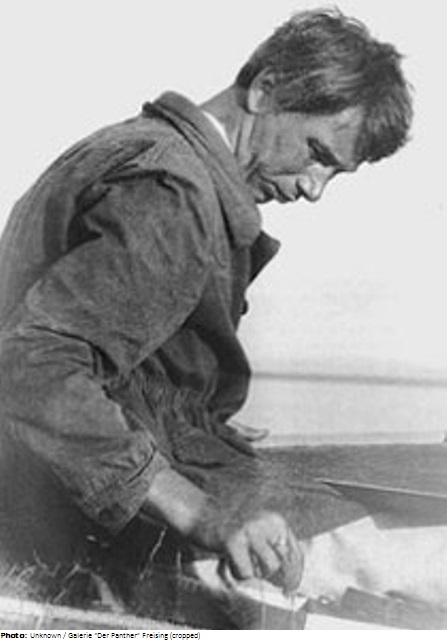Willy Jaeckel

Biographical information
| Roles | Competed in Olympic Games |
|---|---|
| Sex | Male |
| Full name | Willy Gustav Erich•Jaeckel |
| Used name | Willy•Jaeckel |
| Born | 10 February 1888 in Wrocław, Dolnośląskie (POL) |
| Died | 30 January 1944 (aged 55 years 11 months 20 days) in Berlin, Berlin (GER) |
| NOC |  Germany Germany |
Biography
Wrocław-born German painter Willy Jaeckel, who studied in Wrocław and Dresden, was one of the most important German Expressionists. He lived in Berlin beginning in 1913 and taught at the College of Art Education, starting in 1925. In 1915, he became a member of the Berlin Secession. During World War I, he was deployed as a map draftsman on the Eastern Front. After the war, he became a member of the Prussian Academy of Arts. During his stay in the Allgäu region, he then created religious and mystical pictures.
Back in Berlin, Jaeckel painted landscapes, nudes, and still lifes. He stayed for long periods in the seaside resort Hiddensee. After 1933 his works were removed from museums and exhibitions, and some of them were later included in the traveling exhibition “Degenerate Art”. In 1943 an air raid destroyed his atelier in Berlin, while in 1944 his apartment on the Kurfürstendamm in Berlin burned, and he was buried in the debris and did not survive.
The painting Boxing Match is shown in the exhibition catalog of German entries and thus clearly identified. The painting is also reproduced in the 1930 issue of Jugend magazine. Since boxing matches were among Jaeckel’s favorite motifs in this decade, it is unclear which pastel painting is the second work submitted in 1928. Candidates are from the 1920s (landscape format, now lost) and one in 1927 (portrait format, now in private possession). A picture is also available of his 1932 entry, the Skiläufer (Skier).
Results
| Games | Discipline (Sport) / Event | NOC / Team | Pos | Medal | As | |
|---|---|---|---|---|---|---|
| 1928 Summer Olympics | Art Competitions |  GER GER |
Willy Jaeckel | |||
| Painting, Drawings And Water Colors, Open (Olympic) | ||||||
| Painting, Paintings, Open (Olympic) | ||||||
| 1932 Summer Olympics | Art Competitions |  GER GER |
Willy Jaeckel | |||
| Painting, Paintings, Open (Olympic) |
List mentions
- Listed in Olympians Who Were Killed or Missing in Action or Died as a Result of War (Died under the debris of the bomb shelter of his burned down apartment in Berlin.)